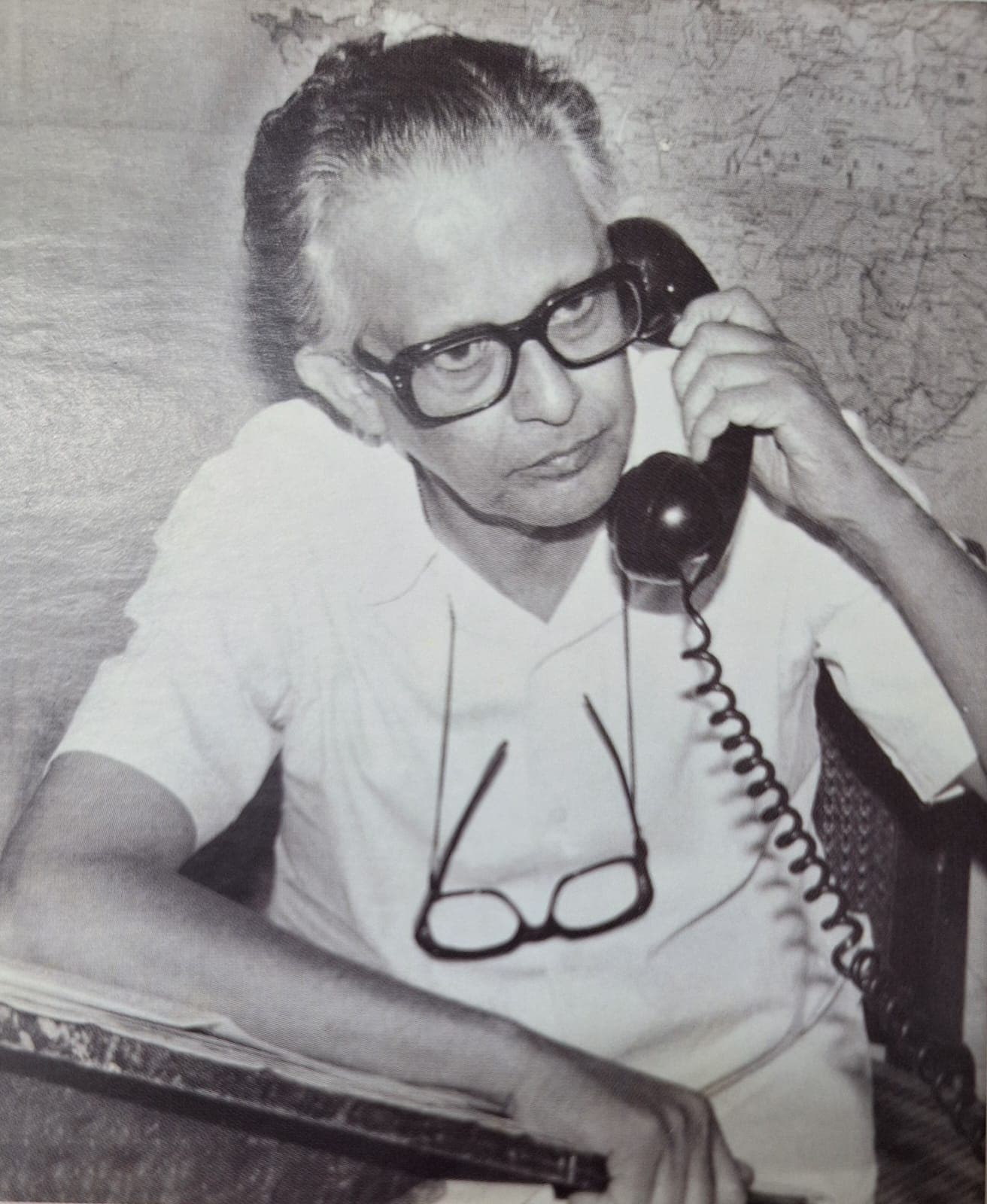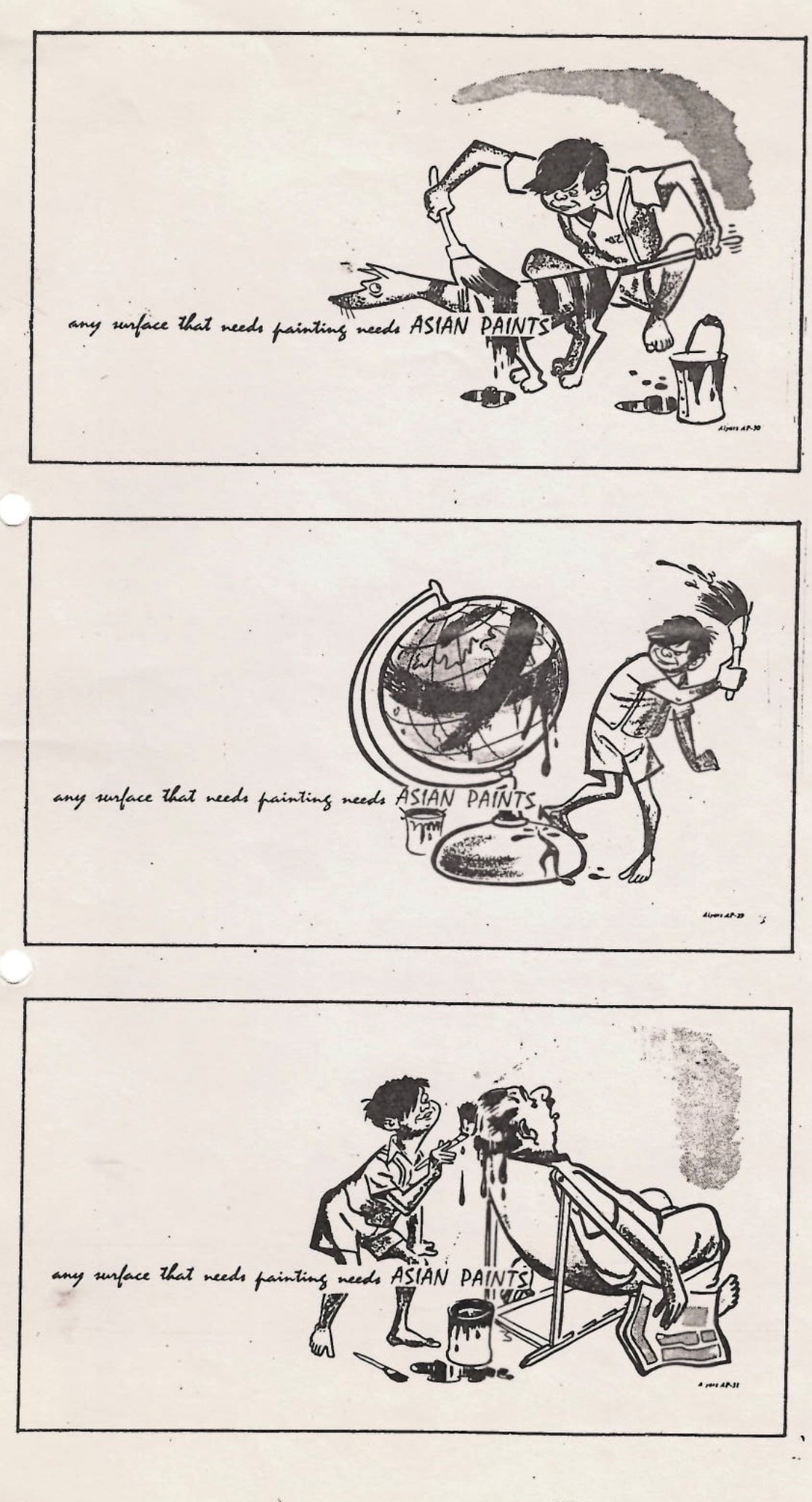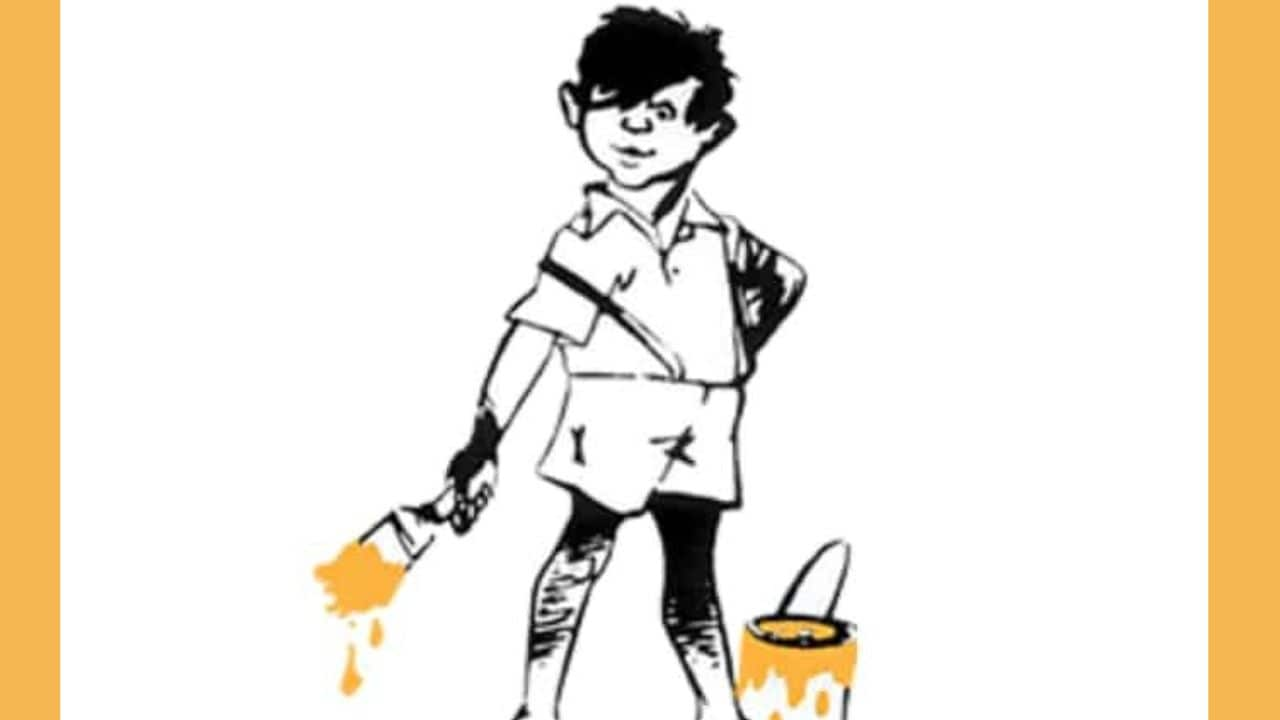It was the year 1951. Rasipuram Krishnaswami Laxman, popularly known as RK Laxman, had created the character the Common Man, which appeared in the daily pocket cartoon ‘You Said It’ in the Times of India. Clad in a dhoti and plaid jacket, the Common Man represented the hopes and aspirations of millions, and was a sharp observer of events happening in the country.
The character tasted immediate success and caught the attention of executives at the Asian Oil and Paint Company.

Amit Syngle, the company’s Chief Executive Officer and Managing Director, in a conversation with Storyboard18, said that a team from Asian Paints approached Laxman to create a mascot that would bring the brand alive while putting a smile on people’s faces.
The cartoonist took up the task and was engaged for hours in imagining, creating, and then rejecting what he had painstakingly created. Laxman was tired of his imagination not matching his expectations and was all set to give up. But then, over cigarettes and cups of coffee, he saw a small boy take shape. This was in the year 1954.
Gattu
The mascot, whose black hair dangled over his right eye, was dressed in half-sleeved shirts, half pants, had braces on his teeth, and carried a paint brush along with a dripping can of Asian Paints. Syngle said the mascot had a lopsided grin, and was mischievous, converting mundane objects and places into things of joy and fantasy with the many colours of Asian Paints. Now came the time to give it a name.
Asian Paints released print ads announcing a Give Me a Name contest, where the person who suggested the best name would win Rs 250. The amount was later increased to Rs 500.
According to the book A History of Indian Advertising, thousands of entries came in, but one stood out — Gattu. This was suggested by two men, Rele and Aras, who hailed from Mumbai.
The mascot was named Gattu, said Syngle, and the little boy epitomised the brand’s tagline, ‘Any surface that needs painting needs Asian Paints.’ According to the book, following the introduction of Gattu, the sales of the brand went up 10 times in four years.
Syngle said that in the early 1950s, the brand worked around the theme of innovation. This included innovation in colours, the introduction of small packs, extending its distribution to small upcountry areas, etc.
A series of print ads featuring Gattu which highlighted the message of innovation expanded the reach of Asian Paints to the nooks and crannies of the country.

Gattu was seen on all cans of Asian Paints, and people began to identify the mascot with the brand.
There were also a series of print ads which portrayed him with a paint brush painting objects and surfaces, with the tagline, Any surface that needs painting needs Asian Paints. From the ‘50s till the ‘70s, Gattu was mostly seen in print ads.
But some people objected that Gattu represented child labour. Explaining this, Usha Srinivas Laxman, daughter-in-law of the late cartoonist has said, “If you see, Gattu is just playing with colours. He is not actually painting the walls of a house. He’s only playing and painting things around him.”
Gattu lives on
In the early 1990s, Asian Paints began to use Gattu as a sign-off in TVCs, which helped increase the mindshare of the brand in rural markets, said Syngle.
Due to the emotion of celebration and joy attached to festivals, the brand launched the campaign ‘Celebrate with Asian Paints,’ followed by the concept of ‘Merawala’ which highlighted the importance of colours, added Syngle.
In the late 1990s, Asian Paints launched the Har Ghar Kuch Kehta Hai campaign, which signified the brand’s shift from Festivals to Homes, given the emotions that people invest in making a home, which is a reflection of one’s personality. Through all this, Gattu continued to adorn the cans of Asian Paints.
Around the same time, when the brand was working on a new visual identity, Asian Paints realised that a lot of people still connected with Gattu, and decided to retain the little boy, who continues to adorn its cans till date, according to Syngle.
Read More: The Butter Half: How the Amul girl became the toast of India
